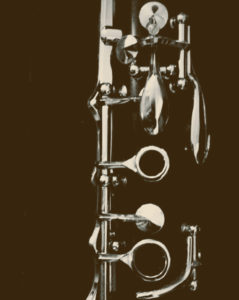National Schools of Clarinet Playing
National schools of clarinet playing describe a group of clarinetists who share similar ideas of sound concept, pedagogy, fundamentals, and other ideological beliefs as they relate to the clarinet. These shared beliefs have been historically shaped by cultural, sociological, political, nationalistic, and other influences. These national schools are not as pronounced today due to technological advances and the blending of disparate cultural influences.
I have included several major national schools of clarinet playing, but it is important to note that each country and larger geographical region has its own unique pedagogy and stylistic similarities. There are countless other prominent schools, including the Russian, Spanish, Israeli, Portuguese, Hungarian, Greek, Turkish, Chinese, and many others.
Please note: This article should serve as a general overview of the national schools of clarinet playing. For each national school, I have given broad descriptions of each and included several renowned clarinetists. This is by no means a comprehensive examination of each school, nor is each listing of clarinetists meant to be complete. Even within national schools of playing, each musician must develop their own unique sound concepts and musical interpretations.
French
Characteristics: brilliant tone quality; light articulation; virtuosic technique; Boehm system
Notable schools: Paris Conservatoire
- Joseph Beer (Czech)
- Michel Yost
- Jean-Xavier Lefèvre
- Frédéric Berr
- Hyacinthe Klosé
- Cyrille Rose
- Louis Cahuzac
- Ulysse Delécluse
- Guy Deplus
- Jacques Lancelot
- Michel Arrignon
- Philippe Berrod
- Philippe Cuper
- Nicolas Baldeyrou
- Paul Meyer
German
Characteristics: dark, rich sound; fluid style; Oehler system
Notable schools: Hochschulen für Musik (Leipzig, Munich, Berlin, Köln, Dresden, Stuttgart)
- Franz Tausch
- Heinrich Baermann
- Carl Baermann
- Johann Simon Hermstedt
- Iwan Müller
- Richard Mühlfeld
- Karl Leister
- Sabine Meyer
- Andreas Ottensamer
Italian
Characteristics: bel canto, vocal, and operatic style; virtuosic technique; reed historically on top of mouthpiece (until early 20th century)
Notable schools: Conservatorio di Milano
- Benedetto Carulli
- Ernesto Cavallini
- Gaetano Labanchi
- Luigi Bassi
- Giovanni Battista Gambaro
- Ferdinando Sebastiani
- Ferdinando Busoni
- Aurelio Magnani
- Alessandro Carbonare
- Corrado Giuffredi
English
Characteristics: wide sound due to large bore instruments and open mouthpieces; vibrato; Boosey & Hawkes instruments
Notable schools: Royal Academy of Music
- Henry Lazarus
- Reginald Kell
- Frederick Thurston
- Jack Brymer
- Thea King
- Acker Bilk
- Michael Collins
- Gervase de Peyer
- David Campbell
- Pamela Weston
- Emma Johnson
- Julian Bliss
- Andrew Marriner
American
Characteristics: Combination of other national schools; beauty of sound; fluid technique and articulation; jazz
Notable schools: Juilliard, Curtis
- Daniel Bonade (Swiss)
- Simeon Bellison (Russian)
- David Weber (Lithuania)
- Robert Marcellus
- Harold Wright
- Larry Combs
- Benny Goodman
- Artie Shaw
- Richard Stoltzman
- Leon Russianoff
- Stanley Drucker
- Kalmen Opperman
- Frank Cohen
- Clark Brody
- Ralph McLane
- Eddie Daniels
- Anthony McGill
- Stephen Williamson
- Jon Manasse
- Doreen Ketchens
How would you describe these national schools of clarinet playing, and which clarinetists would you include on your lists?

4 Comments
Bill Lightfoot
Dame Thea King would be a suggestion for an outstanding English clarinetist.
jennyclarinet
Thank you! How could I forget to include such an incredible musician? I’ve updated this post and have added her to the list.
Robert Monie
Most of the players listed seem to be in categories that broadly indicate both country of origin and style of performance. But if I were using my ears alone, I would have to put Julian Bliss in the American category. He studied at Indiana and does not have a single tonal or stylistic trait that is recognizably English. The current batch of principal clarinetists in major U.S. orchestras is evolving the American style and sound, and some of them–Boris Allakhverdyn, Stephen Williamson, Ricardo Morales, Anthony McGill—need to be included in the American list. Then there are players who qualify as International in their approach–Sharon Kam, Julian Herve, and Sunny Lee for instance. Maybe almost everybody is starting to become more international than country-oriented.
Anders Hansen
Hi Jenny,
I just stumbled on your site and interesting posts through a link on the Clarinet bulletin board. Great stuff! Bearing in mind your lists did not claim to be complete, I would suggest adding Gino Cioffi to the Italian school, and Jimmy Hamilton (jazz/great player/Ellington band, but classically trained with Russianoff) and Anthony Gigliotti to the American. Also, Anat Cohen – fabulous Israeli jazz/world clarinetist – but she did study at Berklee and you need more women on the list. You might add Leopold Wlach to the German (though maybe he should be considered Viennese). Anyway, thanks for your enlightening postings.
Anders Hansen (amateur)